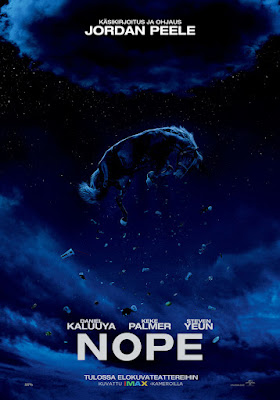 |
| Timo Koivusalo: Pelle Hermanni / Herman the Clown (FI 2022) starring Vesa Vierikko. |
Clownen Herman.
FI 2022 Artista Filmi. P: Timo Koivusalo.
D: Timo Koivusalo. SC: Simo Ojanen, Timo Koivusalo. Cin: Pentti Mutanen. AD: Markku Myllymäki. M: Esa Nieminen.
Based on the character created by Simo Ojanen for the children's series Sirkuspelle Hermanni at Yle TV2 Pikku Kakkonen 1978–1988, starring Veijo Pasanen (1930–1988). The opening theme was Radetzky-Marsch (1848) by Johann Strauss (Vater) and the end tune was the Anvil Chorus from Il trovatore (1853) by Giuseppe Verdi.
C: Vesa Vierikko (Pelle Hermanni), Milo Tamminen (Roni, 12), Oona Hakanpää (Julia, 11), Martti Suosalo (Maximilian), Iina Kuustonen (Viola), Tom Lindholm (Viktor), Ylermi Rajamaa (kuvaaja), Linda Wiklund (Mona), Heikki Nousiainen (Father Kasperi), Hannu-Pekka Björkman (Circus Director), Tuija Piepponen (Äitiliini), Minttu Mustakallio (Sylvia), Helena Vierikko (desk clerk), Tom Petäjä (postman), Kalle Lamberg (security controller).
Theme song and music video: Diandra: Ootko tosissas (FI 2022).
Dedication: "Lämmöllä muistaen Simo Ojanen 1940–2021".
Loc: Kirjurinluoto (Pori).
Helsinki premiere: 9 Sep 2022.
Children's Movie Sunday Previews, 28 Aug 2022.
Viewed at a preview at Finnkino Strand 1, Iso Kristiina, Lappeenranta, 28 Aug 2022.
Synopsis: "Simo Ojasen aikoinaan käsikirjoittama sydämellinen hahmo seikkaili Ylen Pikku Kakkosessa vuosina 1978–1988. Useamman sukupolven suursuosikki astuu nyt elokuvan myötä 2020-luvulle suurilla klovnin kengillään, valmiina valloittamaan uudet areenat. "
" Pelle Hermanni lähtee etsimään isäänsä, jota ei ole nähnyt sen jälkeen kun tämä lähti mittaamaan maapalloa jaloillaan. Perään karkaa salaa Taikuri Maxin poika, kymmenvuotias Roni. Tästä alkaa riemastuttava seikkailu täynnä taikuutta, hullunkurisia käänteitä ja värikästä sirkuselämää, elokuva uuden sukupolven lapsille ja nostalgian nälkäisille aikuisille. "
" Elokuva on vauhdikas ja hyväntahtoinen tarina, joka sopii kaikenikäisille, teemanaan toisista välittäminen ja ystävyys. "
" VOI ÄNKERÖINEN! on englanniksi ” Cantankerousimos!” "
AA: The mood was joyous in the Children's Movie Sunday preview of Herman the Clown, the first in a series of film adaptations of a perennial Finnish television children's favourite series created by Simo Ojanen, whose last work the screenplay for this movie turned out to be.
Timo Koivusalo sustains a jovial and genial mood, the cast is composed of top actors, and the sunny locations of Pori and Naantali are appealing. The clown is a mysterious creature that has inspired the cinema since the beginning, especially during the silent era and the early sound film (He Who Gets Slapped, The Blue Angel), and later film-makers ranging from Fellini (La strada) to Bergman (Gycklarnas afton), not forgetting the Joker in the Batman franchise. The figure of the clown is a trick mirror of identity, explored here in comical and existential ways ("I'm lost", "Might that be me?").
Although all actors are in good form, my favourite is Iina Kuustonen as Viola. She speaks in proverbs, but always twists them without realizing it. In a recurrent gag, she gets corrected and answers without missing a beat: "that's what I just said". In the final dialogue surprise she gets the proverb right: "better later than never".
I don't belong to an age group familiar with Herman the Clown the tv series, but I understand that key features have been faithfully sustained, including the theme tune, Radetzky-March by Johann Strauss, Sr. This selection obeys a great tradition of the music hall in juxtaposing the sublime with the ridiculous in music choices, familiar for instance in Charles Chaplin's sonorization of The Gold Rush where Tchaikovsky's Grande Valse Villageoise from the Sleeping Beauty is played in the most heartbreakingly pitiful dance hall sequence in the history of the cinema.
BEYOND THE JUMP BREAK: WIKIPEDIA DATA ABOUT THE TV SERIES:








